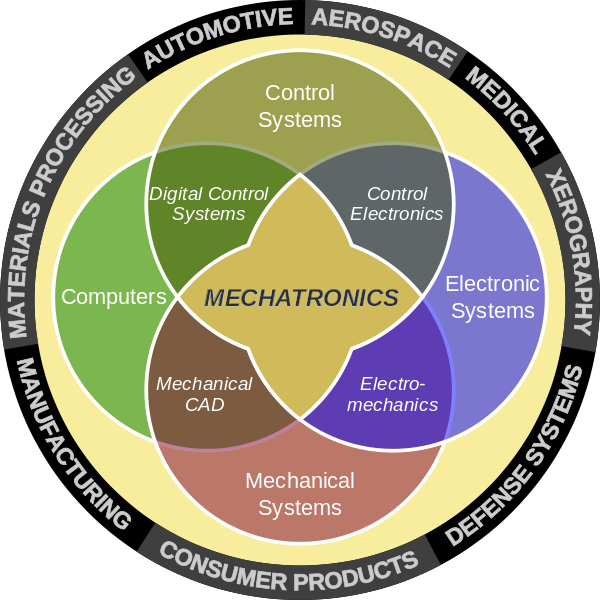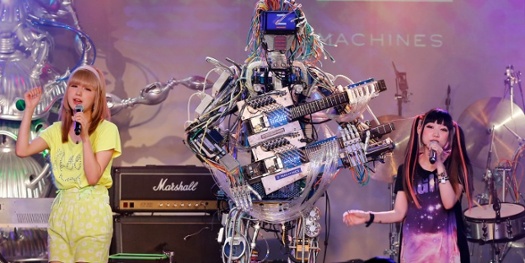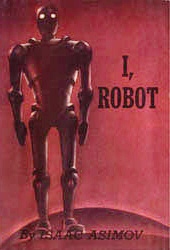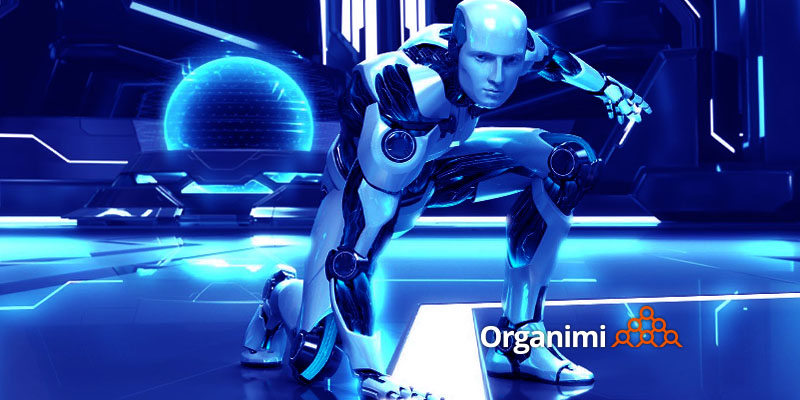In a recent blog, we wrote about the emerging trend to “virtual”, for teams, workplaces, and entire organizations. In today’s blog, we go further, look forward, and explore another driver of change in tomorrow’s workplace – the increasing adoption of robotic and artificially intelligent systems and applications, and the implications of this trend for organizational design and the role of HR.
The short question is: where will the robots fit into your organizational design?
Are You Hearing Voices?
Some of you will remember the “voice mail ladies” of corporate telephone systems – the feminine voices of times past who encouraged us to “leave a message”. In the early 1980s over 30 companies competed in this marketplace. Today, few remain, a result of the recent decline in the use of voicemail systems, as other, newer, “smarter” technologies take over. And so it goes.
Who faxes anymore? If you look across most business to business applications, older technologies are being replaced by newer ones. The question is…where are we going next exactly?
Many of you may have seen or heard about “Her” the recent film set in LA “of the near future”.
The film features Joaquim Phoenix as Theodore Twombly. As the write-up says “heartbroken after the end of a long relationship, he becomes intrigued with a new, advanced operating system, which promises to be an intuitive entity in its own right, individual to each user.”
Upon initiating the system, he is delighted to meet “Samantha,” played by Scarlett Johansson, a bright, female voice, who is insightful, sensitive and surprisingly funny. As her needs and desires grow, in tandem with his own, their friendship deepens into an eventual love for each other.

Can learning to love your new technology go this deep? This may seem a bit of a stretch.
The bigger idea – of people developing more complex relationships with (and even dependencies on) the technologies supporting their day to day working and personal lives may not be as unrealistic as it seems.
Smart phones are a simple example. Over the past decade we have all seen the creeping influence of our mobile devices and the grip they hold over so many of us. We experience this as the “face buried in device” poses we see everywhere – in homes, offices, stores, washrooms, school cafeterias, parties, sporting events, and on public transit systems.
Judging by the tut-tutting of grandparents, smart phone use (abuse? addiction?) is pretty much today’s equivalent to the “rock and roll” and “long hair” in the 60s and 70s.

The only difference of course is that it is only the grandparents – the oldest among us – doing the tut-tutting. Their own children and grand-children – everyone under the age of 65 basically (sorry for sounding ageist!!) – exhibits pretty much the same behavior…and pretty much the same dependency.
Smarter technology is becoming an increasingly interwoven part of our life experience, at work and at play. And more than a few people express concerns that we are becoming dumber in the process.
Mechatronics and The Singularity: What’s Next?
So I guess you won’t be surprised to learn that we are barely scratching the surface of technology capabilities, and of our growing dependencies.
As the “bring your own device” movement demonstrates, smart phones have worked themselves into our lives, into the workplace, and into the social fabric across the globe. They’re everywhere.
Early innovation by Blackberry, built on by Apple, Google and others, has created a watershed in computing.
But the smartphone is not unique.
Wireless devices, connectivity and applications have exploded over the past decade, changing our personal, home and work lives in countless ways. Research by Mary Meeker, one of most widely respected Internet technology researchers and trend spotters, offers this year phenomenal, data drive research on all of the trends shaping our online social experience moving forward.
In areas as diverse as “big data”, prosthetics, artificial intelligence, bioscience and nanotechnology, innovative companies are exploring – and further blurring – the boundaries between human and mechanical capabilities.
Mechatronics programs at major engineering schools are producing a host of grads, many of whom are creating new start-ups, exploring the convergence of electronics, mechanical, computer engineering integration within product design and manufacturing, in order to improve and/or optimize the functionality of products and platforms across multiple industries.

A neat start-up called Thalmic Labs, for example, in our home town, is harnessing electrical signals generated from your body movements to revolutionize the way you interface with computing systems, creating entirely new opportunities for technology advancement in everything from gaming all the way through to remote control in industrial design and manufacturing processes.
Org Charts and “The Internet of People, Places and Things”
In a recent blog entitled Strategy In A World of Constant Change, strategy guru Roger Martin talks about “getting a bit weary of hearing it repeatedly asserted that we’re living in a world of constant, accelerating change”. (Maybe he is weary because he is just tired of commenting on the pace and destructive force of change. As a director of RIM he saw it first hand.)
His blog makes some very good points about how long it takes for change to actually happen in the real world. As he notes Science Fiction guru William Gibson commented that “the future is already here — it is just not very evenly distributed.” Martin adds: “His point, of course, is that when entirely new, transformative futures arrive (like the mouse in 1965) their effects take a long time to become evenly distributed — typically a long, long time even in the supposed fast-moving tech sector.”
So what’s the point?
Early in her career as a mainframe programmer, many years ago, a friend joked with me about the weekly “job kills” the programming team had tallied that week — computerized applications that rendered positions for people obsolete. The attitude was casual; the consequences remote.
That was in the early 80s – now almost 40 years ago.
Fast forward to today’s increasingly automated, hyper-efficient, and slow growth economies, and the labor market changes have been quite profound, as all these hits accumulate and are tallied up.
Disruptive technological change has many consequences. Not all of them are positive. As we experience more and more change, at what seems to be a faster and faster pace, working environments can be negatively affected.
This nagging fear of technology seems to be lurking everywhere these days as more and more people in more and more industries worry about the commoditization of their jobs and roles, and see more and more evidence of its presence.
The most common story line among most people threatened with displacement by technology is fear – the fear of change, of the unknown, of opening things up for different approaches and perspectives. Perhaps a growing suspicion and fear of technology and what it may do to transform workplaces.
A decade ago, the “internet of things” was popularized as a “next” evolutionary front for the Internet. The original concept was that instead of seeing the Internet as a forum for the creation and exchange of ideas, we could use emerging technologies and the strengths of computer systems to connect, and therefore better manage, the things around us; our homes, our inventories, and the like.
For better or worse, we have now blown very far past that original “things” vision. The things we were thinking we could manage more efficiently are now beginning to manage us. The “Internet of things” is now a collection of increasingly interconnected, increasingly pervasive, increasingly intelligent, and increasingly autonomous systems, devices and platforms; able to communicate with each other; able to collaborate with humans in ways few of us previously imagined, and dealing with “people, places and things” from an increasingly active, machine learning based, adaptive intelligence.
Given these trends, it is not surprising then that the Singularity movement continues to gain visibility. The Singularity movement, conceived some time ago in the realms of science fiction and evolving before our eyes into fact, is based on the notion of a hypothetical moment in time when artificial intelligence will have progressed to the point of a greater-than-human intelligence, radically changing civilization, and perhaps human nature.

Sure. Roger Martin is right. This change isn’t going to happen over night. But it is already in motion.
He has a couple of quotes that are good book ends for this blog:
“certain futures can be seen very early if you look carefully at faint initial signals”
“in recognizing that a particular technology or industry is doomed you forget that they can take a long time to die”
The Role of HR In A World Of Smarter Machines and Distributed Teams
HR teams have a challenging enough time dealing with people issues in most organizations. How about dealing with the people issues associated with the increasing deployment and use of artificially intelligent robotic and machine learning systems in your workplace? Where exactly where will we fit in? What impact do we have? What value will we contribute? Will it be lasting?
This linkage between technology and people will reshape the role of HR organizations themselves as the “Sherpa”. HR has always mediated the exchange of information between individual employees and the leadership of the organization. Now it needs to add mediating the “division of labor” between people and smarter machines, as it impacts on everything from business strategy and organizational culture, all the down to organizational design, hiring and talent management. How do you screen in your hiring process for new employees young people who will be comfortable working with (or for) a robot?
In a recent post in The Atlantic on the relationship between people and computers, entitled Where Humans Will Always Beat Computers, MIT computer science Prof Rob Miller provides some comforting news about where the intersection between people and machines will end up, arguing that human intelligence “is far from obsolete”.
Miller studies human-computer interaction, specifically the emerging field called “crowd computing”.
His label is a play on the now more familiar term “cloud computing”. He describes crowd computing as software that employs a group of people to do small tasks and solve problems better than an algorithm or a single expert. “Crowd sourcing” and other “crowd-isms” are also commonly talked about these days.
Examples of crowd computing he cites include Wikipedia, Amazon’s Mechanical Turk (where workers outsource projects that computers can’t do to an online community), and the Facebook’s photo tagging feature. Other common examples include any of the social platforms to the extent they incorporate crowd curated or contributed content.
And the dividing lines between people and technology need not be that clear-cut. Websites like 99designs, which put a global workforce of graphic designers at your personal disposal, for a few dollars, show how creativity and work processes and outputs can be reimagined in an internetworked online community of people and systems, who are connecting, communicating and collaborating, online, in real time. Whether they are people or robots seems hardly to matter. The focus is on results.
A “post-employee” economy where every task is automated by a computer is something Miller does not see happening, nor does he want it to happen. Instead, he considers the relationship between human and machine as a symbiotic and mutually reinforcing one. Let’s hope so!!
Miller says. “My argument is that there’s this triangle. A person needs more than just themselves. A crowd of people can actually [outperform] an individual expert. The symbiosis of all three of these—end user, great software, and small contributions from a whole lot of people—will be a whole lot more powerful than any pair of those.”
At Organimi, we think the process of organizational design – the creation and curation of org charts, photoboards and other workplace connectivity tools bring people together – falls squarely into this category of combining technology, individual and crowd inputs. At Organimi we’re reimagining what organizational design and org charts will be in tomorrow’s organizations – with their virtual, decentralized and robotic dimensions, as much as their current hierarchical and people-product-place centric designs!
Opening up organizational design within your organizations using cloud based technologies helps enable this three way collaboration among experts (business leaders and HR), technology (Organimi) and end users (the virtual team).
Maybe you don’t need to make space in your org charts for the robots yet, but you do need to keep your teams engaged, evolving, and learning to take advantage of the incredible potential for innovation and efficiency that comes from having an “online culture” in your workplace.
I, Robot? The notion does still seem far fetched. But not as far fetched as it seemed to be when Isaac Asimov first published his short stories in 1950….over 60 years ago.

The direction of movement seems clear. Organimi is part of that movement…and an easy place for your team to start to sharpen their technology and people skills…for whoever they happen to be working with.
Get on board, and start making room for the robots to hop on board beside you!

